Adapted by Skylar Edberg from Dummies.com
Almost every Passover seder includes various symbolic foods and other items. Nothing on the seder table is selected randomly and each item has its purpose and often has a specific place on the table or seder plate. Just because the seder traditionally uses certain ritual foods, doesn’t mean you can’t add your own traditions and rituals to your dinner that are important and relevant to you.
Here’s a breakdown of the items, and their purposes, on a passover seder plate:
What’s on a seder plate?
The seder plate holds at least six of the traditional items that are talked about during the seder or ritual. The shankbone, karpas, chazeret, charoset, maror, and egg. Most of the time, ornate decorative seder plates are used, but you can use any plate in your home. If you have kids, they can decorate a paper plate and draw a place for each item.
Also, check out our crisp and bright white wine charoset recipe coming in a few days!
- Roasted lamb shankbone: One of the most striking symbols of Passover is the roasted lamb shankbone (called zeroah), which commemorates the paschal (lamb) sacrifice made the night the ancient Hebrews fled Egypt.
- Roasted egg: The roasted egg (baytsah) is a symbol in many different cultures, usually signifying springtime and renewal. Here it stands in place of one of the sacrificial offerings which was performed in the days of the Second Temple.
- Maror (“bitter herb”): Any bitter herb will work, though horseradish is the most common. Bitter herbs bring tears to the eyes and recall the bitterness of slavery. The seder refers to the slavery in Egypt, but people are called to look at their own bitter enslavements, whether addiction or habit.
- Charoset: There’s nothing further from maror than charoset (“kha-ROH-set”), that sweet salad of apples, nuts, wine, and cinnamon that represents the mortar used by the Hebrew slaves to make bricks.
- Karpas: Karpas is a green vegetable, usually parsley (though any spring green will do). While karpas may symbolize the freshness of spring, others say people eat it to make them feel like nobility or aristocracy. Some families still use boiled potatoes for karpas, continuing a tradition from Eastern Europe where it was difficult to obtain fresh green vegetables.
- Chazeret: The chazeret (“khah-ZER-et”) is a second bitter herb, most often romaine lettuce, but people also use the leafy greens of a horseradish or carrot plant. The symbolism is the same as that of maror.
- Salt water: Salt water symbolizes the tears and sweat of enslavement, though paradoxically, it’s also a symbol for purity, springtime, and the sea, the mother of all life. Often a single bowl of salt water sits on the table into which each person dips their karpas during the seder. Then, it’s traditional to begin the actual seder meal with each person eating a hardboiled egg (not the roasted egg!) dipped in the bowl of salt water.
- Orange: The seeds of the orange, like other items on the seder plate, symbolize rebirth and renewal. Some people have taken on the tradition of spitting the seeds to remind us to spit out the hatred experienced by all marginalized members of our communities. The orange is not a traditional item on a seder plate, but has been adopted by many families and communities as a symbol of LGBT tolerance.
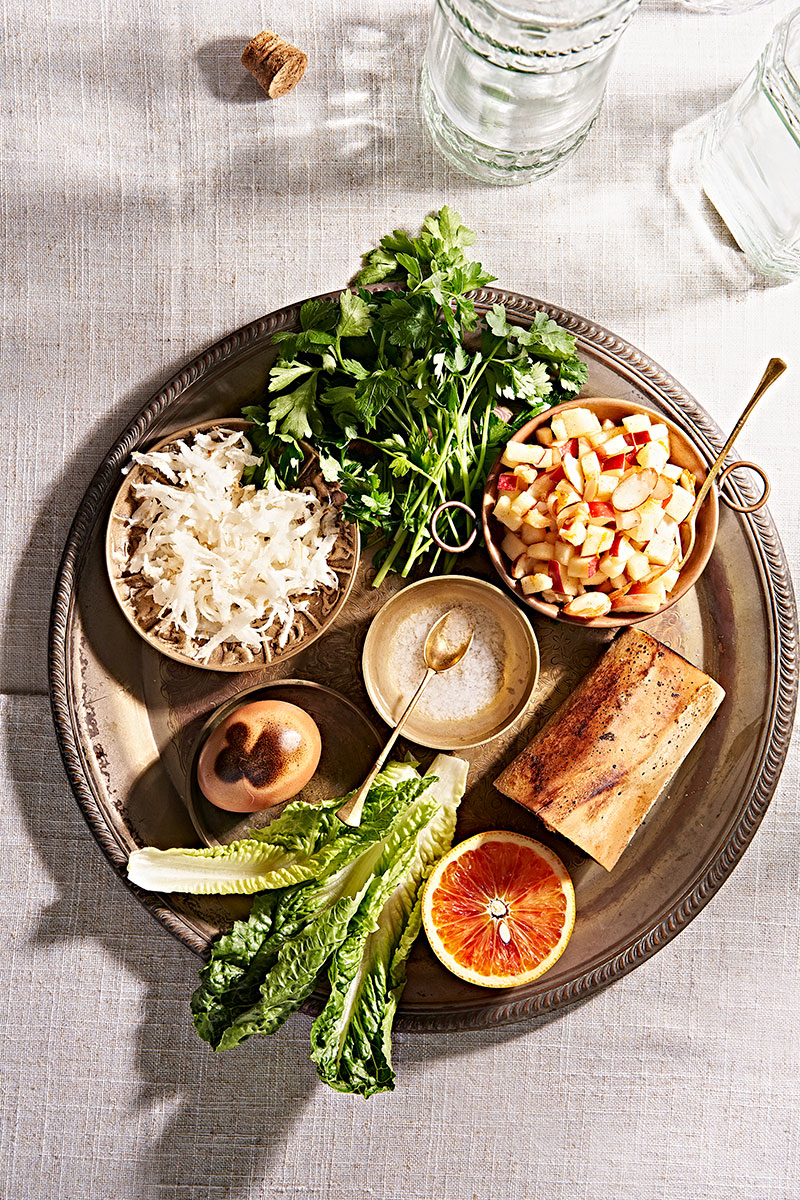
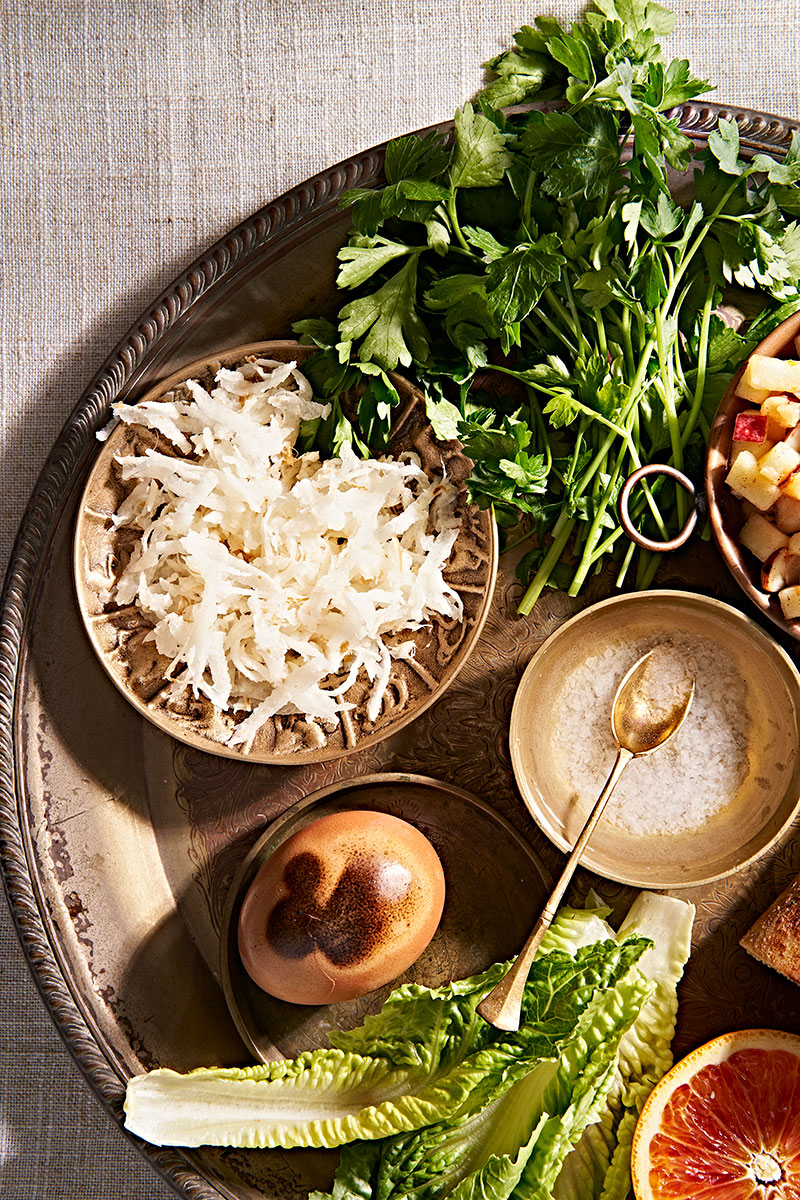
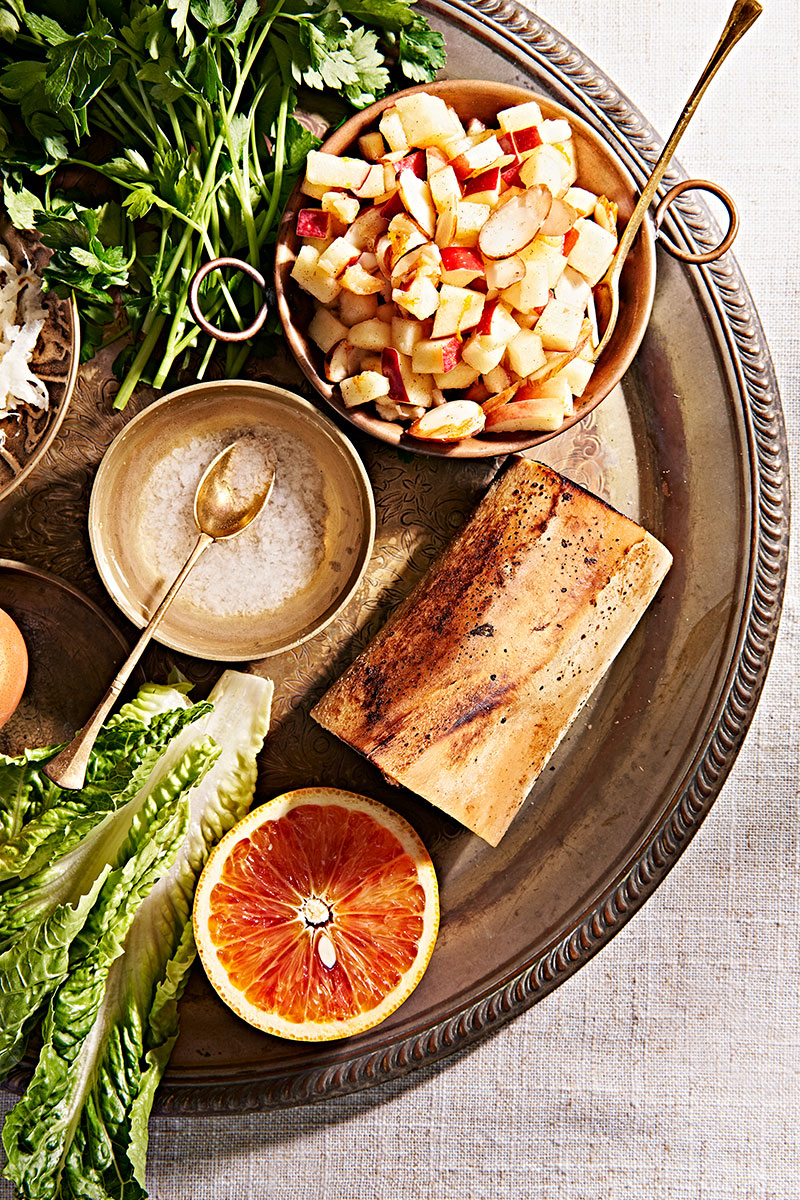
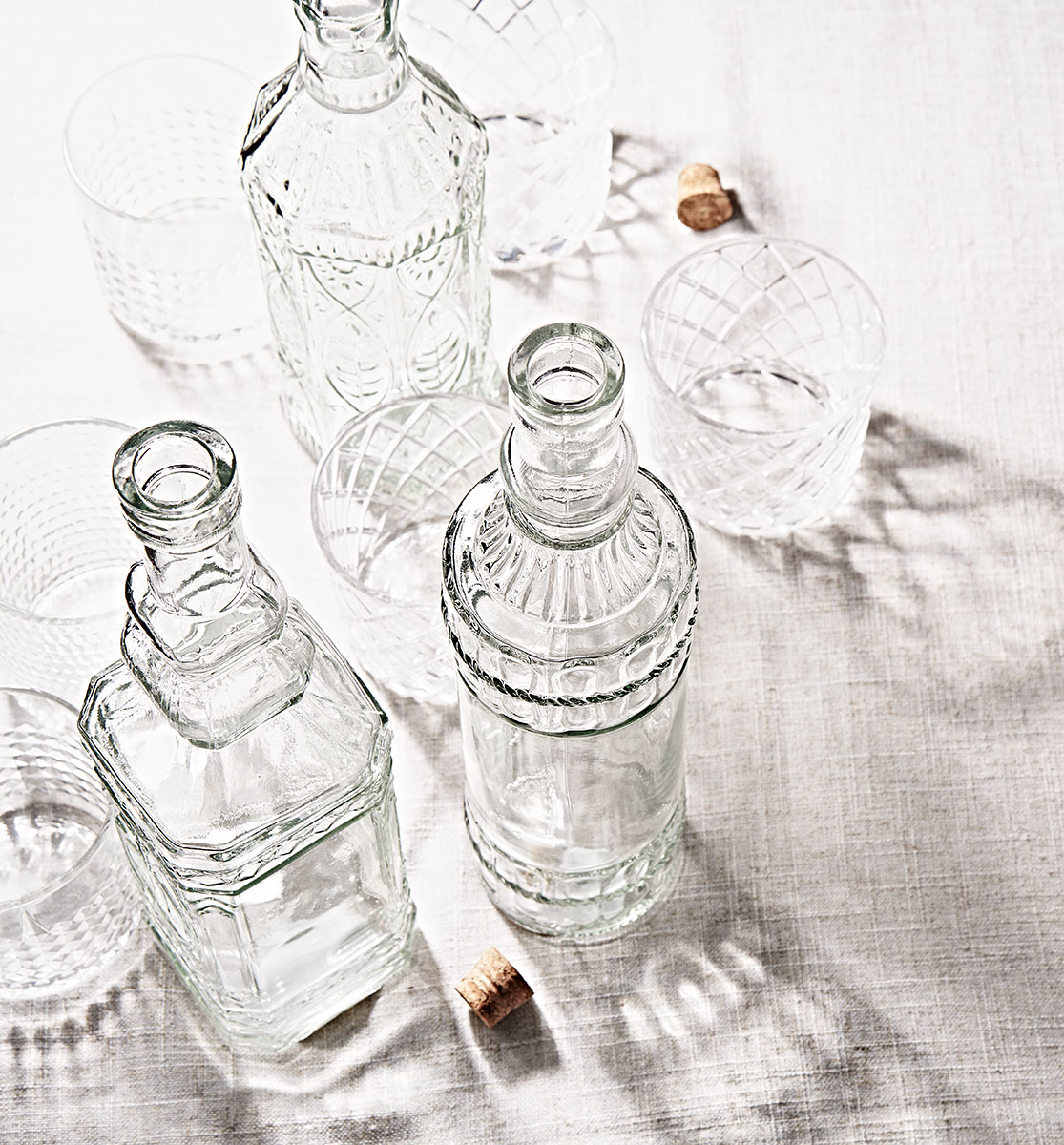
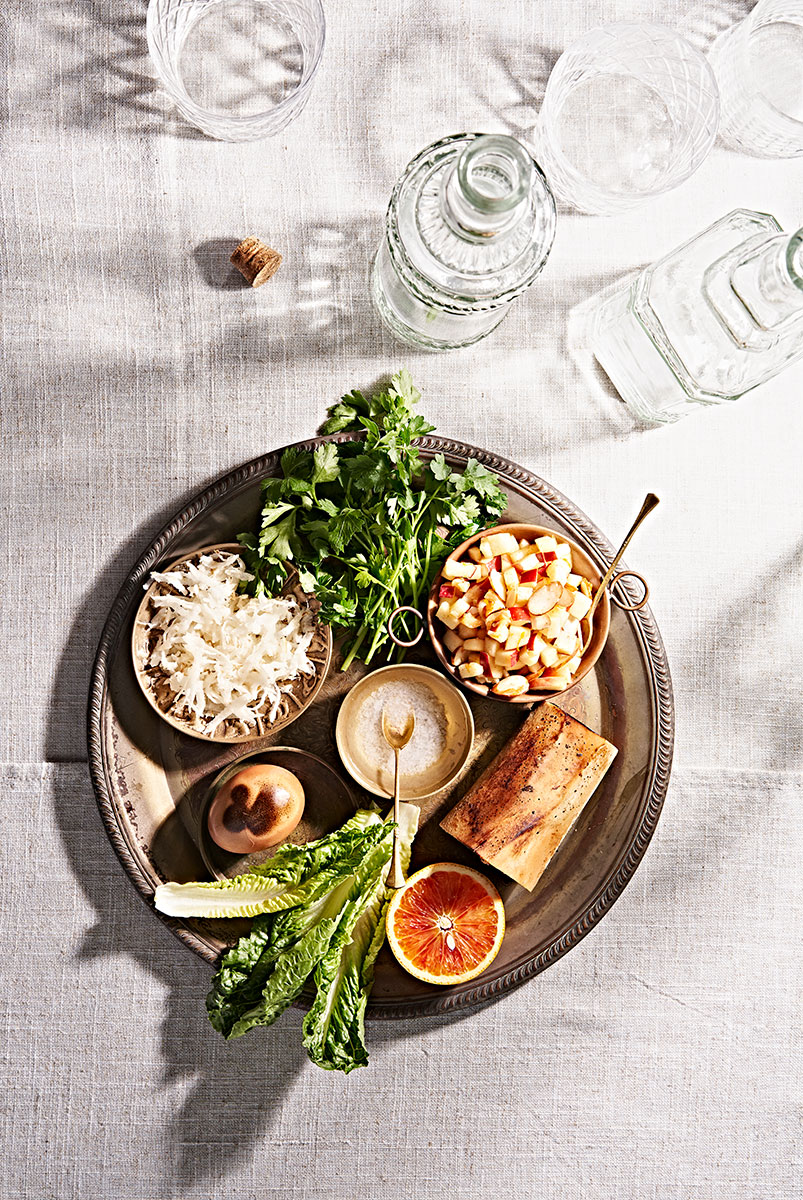
Where did you purchase this plate?
hi there! I got it years ago at a flea market:)